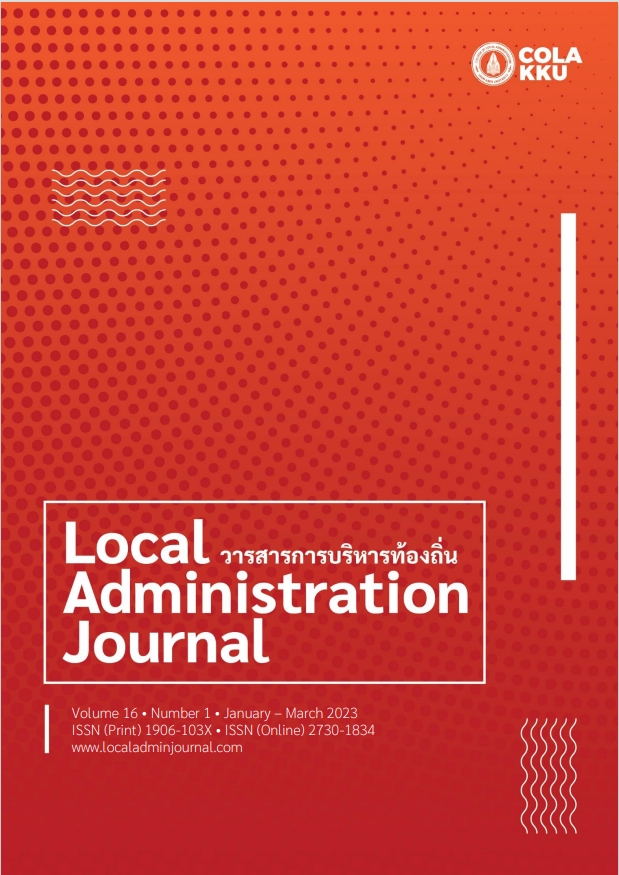The Tanzania Housing and Population Census 2022: A Panacea for Local Service Delivery and Development Drawbacks
Keywords:
Census, Local Service Delivery, Local Development, PanaceaAbstract
Tanzania will undertake a population and housing census in 2022 to determine the nature, type, number, and other related characteristics of its population and housing. But what this process implies to Local Government Authorities (LGAs) on service delivery and local development? Using the secondary sources approach this paper answers this question by disclosing the drawbacks confronting LGAs on service delivery and local development, which probably result from a lack of data on population and housing or poor integration of previous census data that require the 2022 census a remedy. The drawbacks are focused on LGAs’ failures in education health services, 10 percent of LGAs budget as loans for women, youth, and people with disabilities, and revenue collection failures. Such failures hinder LGAs toward full-service delivery and local development. The studied view is that the 2022 census can be a panacea for such failures if LGAs are ready to integrate the 2022 census data in their plans as a foundation for service delivery and local development. The paper recommends LGAs to participate fully in the process and be ready to use the census results to plan, implement and monitor the development process and in delivering services.
References
Agricultural Non-State Actors Forum. (2019). The capacity of local government authorities to mobilize, allocate and spend 10% of own source on women, youth and people with disabilities (Study report). Dar es Salaam: Agricultural Non-State Actors Forum.
Boex, J., Fuller, L., & Malik, A. (2015). Decentralized local health services in Tanzania are health resources reaching primary health facilities, or are they getting stuck at the district level? Washington DC: Urban Institute Elevate Debate.
Bureau of International Labor Affairs, United States Department of Labor, Tanzania. (2016). 2015 Findings on the Worst Forms of Child Labor. Retrieved from https://www.dol.gov/sites/dolgov/files/ILAB/child_labor_reports/tda2015/tda2015.pdf
Controller and Auditor General. (2020a). Annual general report of the controller and auditor general on audit of the local government authorities for the financial year 2019/20. Tambukareli, Dodoma: The United Republic of Tanzania National Audit Office.
Controller and Auditor General. (2020b). Performance audit report on revenue collection from own sources in Local Government Authorities: As performed by the President’s Office - Regional Administration and Local Government. Dodoma: The United Republic of Tanzania National Audit Office.
Fjeldstad, O., Chambasand, G., & Brun, J.F. (2014). Local government taxation in Sub-Saharan Africa. (CMI Working Paper). Bergen: CHR – Michelsen Institute.
Haki Elimu. (2008). What is Quality Education? A Research Report on Citizens’ Perspective and Children’s Basic Skills. Retrieved from https://www.policyforum-tz.org/node/2595.
Haki Elimu. (2015). Will the “2014 Education and Training Policy” Prepare Tanzanian Children to Face Challenges of the 21st Century?
Haki Elimu Position Paper on the Education and Training Policy 2014. Haki Elimu: Dar es Salaam.
International Labour Organization and Tanzania National Bureau of Statistics, Tanzania National Child Labour Survey. (2014). Analytical Report February 2016. Retrieved from http://www.ilo.org/wcmsp5/groups/public/africa/-roaddis_ababa/ilodar_es_salaam/ documents/publication/wcms_502726.pdf
Joshi, A.R., & Gaddis, I. (2015). Preparing the Next Generation in Tanzania: Challenges and Opportunities in Education. Washington DC: International Bank for Reconstruction and Development, The World Bank.
Kapologwe, N. A., Meara, J.G., Kengia, J.T., Sonda, Y., Gwajima, D., Alidina, S. & Kalolo, A. (2020). Development and upgrading of public primary healthcare facilities with essential surgical services infrastructure: a strategy towards achieving universal health coverage in Tanzania. BMC Health Services Research, 20(218), 1-14.
Moore, N. (2006). The contexts of context: Broadening perspectives in the (re) use of qualitative data. Methodological Innovations Online, 1(2), 21-32.
Mzenzi, S.I. (2013). Revenue Mobilization Issues in the Tanzanian LGAs. Retrieved from http://www.clknet.or.tz/wp-content/uploads/2013/03/revenue-mobilisation-issues-inthe-tanzanian-lgas_fv.pd
National Bureau of Statistics. (2013). Tanzania in figures in 2012. Retrieved from https://www.nbs.go.tz/index.php/en/tanzania-in-figures/274-tanzania-in-figures-2012
National Bureau of Statistics. (2014). Basic Demographic and Socio-Economic Profile Report Tanzania Mainland. Retrieved from https://www.tanzania.go.tz/egov_uploads/documents/ TANZANIA_ MAINLAND_SOCIO_ECONOMIC_PROFILE_sw.pdf
President's Office, Regional Administration and Local Government Tanzania (PO-RALG). (2019). Guidelines for Improved Opportunities and Obstacles to Development (O&OD). Retrieved from https://tamisemi.go.tz/storage/app/media/uploaded-files/20191107 %20Guidelines% 20English%20PDF.pdf
Rugeiyamu, R., Shayo, A., Kashonda, A. & Mohamed, B. (2021). Role of Local Government Authorities in Promoting Local Economic Development and Service Delivery to Local Communities in Tanzania. Local Administration Journal, 14(2), 123-144.
Sumra, S. & Katabaro, J. K. (2014). Declining quality of education: Suggestions for arresting and reversing the trend. Dar es Salaam: Economic and Social Research Foundation.
The United Republic of Tanzania. The Local Government Finance Act 1982. Revised Edition 2019 .
United Nations Economic Commission for Europe. (2020). Conference of European Statisticians: Recommendations for the 2020 Censuses of Population and Housing. Geneva: United Nations Economic Commission for Europe.
United Nations-Habitat (2015). The Challenges of Local Government Financing in Developing Countries. Nairobi: UN-Habitat.
United Nations. (2007). Principles and Recommendations for Population and Housing Censuses Revision 2. New York: United Nations.
United Nations. (2017). Principles and Recommendations for Population and Housing Censuses Revision 3. New York: United Nations.
United Nations. (2021). Handbook on the Management of Population and Housing Censuses Revision 2. New York: United Nations.
Downloads
Published
How to Cite
Issue
Section
License
Copyright (c) 2022 Local Administration Journal

This work is licensed under a Creative Commons Attribution-NonCommercial-NoDerivatives 4.0 International License.
The copyright of all articles published in the Local Administration Journalis owned by the College of Local Administration, Khon Kaen University.



